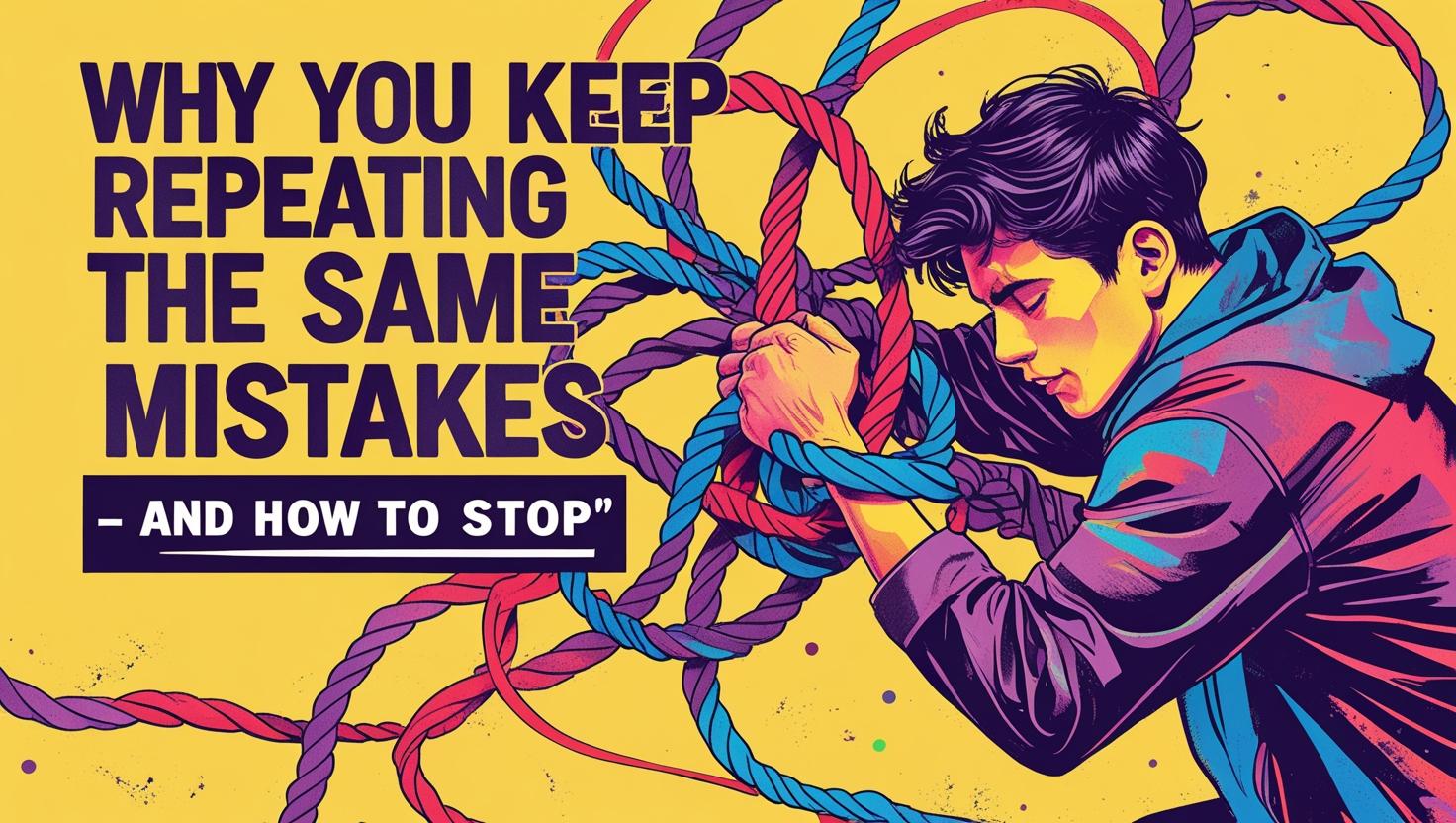Why You Keep Repeating the Same Mistakes — and How to Stop

You know that moment — it might come in the middle of a difficult conversation, or just after you’ve walked away from a situation — where you suddenly realise:
“I’ve done it again.”
You’re not sure how you ended up back here. Maybe you said yes when you didn’t want to. Maybe you snapped at someone, or shut down completely.
And the worst part? You saw it coming.
You’ve been here before.
You promised yourself it would be different this time.
And yet, here you are — stuck in a pattern you know too well.
This episode of Headstraight isn’t about beating yourself up for that. It’s about understanding what’s really happening underneath those repeated mistakes — and how to start doing things differently, even when those habits feel deep rooted.
🎧 Listen to the episode here:
Want to listen on your preferred platform?
“Why do I keep doing this?”
It’s a question people ask themselves more often than they admit.
And it rarely comes with kindness.
We tend to jump straight to criticism:
“I should know better.”
“I’ve already been through this.”
“What’s wrong with me?”
But here’s the thing: there’s nothing wrong with you.
Repeating old patterns doesn’t happen because you’re weak. It happens because you’re human.
We don’t repeat mistakes because we enjoy the fallout. We repeat them because they’ve become hard-wired into the way we respond to stress, uncertainty, or discomfort.
And unless we take the time to look at that wiring — with curiosity instead of judgement — we’ll keep running the same scripts again and again.
What patterns can look like (and why they’re hard to spot)
Patterns don’t always shout. Sometimes they show up quietly, in ways that look like coping or survival:
You avoid conflict at all costs — even if it means never saying how you really feel.
You try to keep everyone happy — but end up feeling resentful and overlooked.
You start withdrawing when someone gets too close — even if part of you craves connection.
You play it cool — even when something deeply hurt you.
You fill every silence — because sitting with discomfort feels impossible.
They’re not just behaviours. They’re responses. Often ones that started early.
If you grew up in chaos, you might’ve learned to walk on eggshells.
If you were ignored, you might’ve learned to keep quiet to avoid rejection.
If you were praised for being “low maintenance,” you might have learned to suppress your needs entirely.
At the time, these responses made sense. They were protective.
But as you grow, they can start to hold you back — especially when the danger is no longer there, but the reaction is still the same.
Why awareness matters more than willpower
You can’t find your way out of a pattern you don’t fully understand.
That’s why real change doesn’t start with willpower — it starts with awareness.
Awareness lets you:
Pause before you respond.
Notice the old script starting to run.
Ask yourself, “Do I actually want to do this, or is it just familiar?”
That moment — between stimulus and response — is where choice lives.
And that’s what this episode is really about: reclaiming that choice.
A deeper look: the 3-layer pattern
Sometimes it helps to break it down. Most unhelpful patterns have a structure — and it usually looks like this:
1. The Trigger
Something happens. It might be external (a comment, a request, a tone of voice), or internal (an old memory, a sudden emotion).
Example: someone asks if you’re okay. You instantly feel like you have to say yes.
2. The Story
Your brain fills in the blanks. You make meaning from the trigger, often based on past experiences.
Example: “They’re only asking out of politeness. I don’t want to be a burden.”
3. The Response
You act — usually in a way that’s fast, familiar, and safe (even if it’s unhelpful).
Example: You smile, say “Yeah, I’m fine,” and change the subject.
Sound familiar?
How to interrupt the cycle — gently
1. Notice the moment
Start small. Pick one situation where you know a pattern tends to show up.
Maybe it’s in conversations with a certain friend. Or during work meetings. Or when you’re trying to set a boundary with family.
Next time you’re in that situation, pause.
Ask yourself:
What’s happening right now?
What am I telling myself?
Is that story really true?
Even if you don’t change your response straight away, this pause gives you space — and space gives you choice.
2. Experiment with doing one thing differently
You don’t need to overhaul the pattern all at once.
Start with one small shift.
If you usually:
Say yes automatically → Try saying, “Let me think about it.”
Shut down in conversation → Try saying, “I’m finding this hard to talk about.”
Apologise constantly → Try noticing when you say “sorry” and asking yourself if it’s really needed.
Laugh things off → Try saying, “That actually upset me.”
It won’t feel natural. In fact, it might feel wrong at first.
But that discomfort is a sign you’re doing something new — not that you’re doing it wrong.
3. Expect some emotional fallout
Change is uncomfortable. Even positive change.
You might feel exposed. Embarrassed. Guilty. You might second-guess yourself afterwards.
This is all normal.
And it’s why self-compassion matters — especially in the early stages.
Don’t aim for perfection. Aim for noticing.
Aim for pausing.
Aim for shifting one brick at a time.
Questions to sit with
Here are a few prompts to explore on your own, or talk through with someone you trust:
What do I keep doing that leaves me feeling worse?
Where did I learn that response?
What do I fear would happen if I did something different?
Who in my life feels safe enough to try something new with?
What would breaking the pattern actually look like for me — in real terms, not just theory?
These questions don’t need perfect answers.
They’re meant to help you notice what’s happening, so you can start making different choices — slowly, steadily, and on your terms.
Final thought
There’s no shame in repeating old mistakes.
It means your system’s doing what it was trained to do.
But just because something feels familiar doesn’t mean it’s right for you anymore.
And just because a reaction is automatic doesn’t mean you have to keep repeating it.
You have more choice than you think — especially once you slow down and pay attention.
Keep noticing. Keep interrupting.
And above all, keep showing up for yourself — one small shift at a time.
Coming up next…
In the next episode, we’ll look at something that often hides in plain sight: putting yourself last.
We’ll explore where that urge comes from, why it feels so hard to say no, and how to stop sacrificing your wellbeing to keep the peace.
If you’re tired of always being the one who bends, I’ll see you there.



